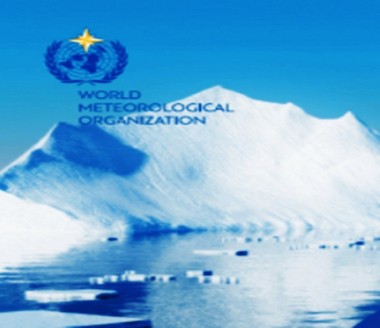
New Delhi, In line with established trends, 2021 witnessed an overwhelming majority of new displacements related to hazardous weather events like tropical cyclones, floods, earthquakes and volcanic eruptions, especially in the East Asia and Pacific region, a World Meteorological Organization's (WMO) report released on Wednesday said.
The report titled, 'State of the Global Climate in 2021', has documented how extreme weather, water, and climate events and conditions had major and diverse impacts on population displacement and on the vulnerability of people already displaced throughout the year.
Pointing out that many displacement situations triggered by hydrometeorological events have become prolonged or protracted for people unable to return to their former homes or without options for integrating locally or settling elsewhere, the WMO report said that the beginning of 2021, at least 7 million people were living in internal displacement following disasters related to natural hazard events in previous years, according to the Internal Displacement Monitoring Centre (IDMC).
The largest numbers of people in this situation were in Afghanistan, India, and Pakistan, followed by Ethiopia, Sudan, Bangladesh, Niger, and Yemen.
"Due to continuing or growing risk in their areas of origin (and return) or settlement, people who have been displaced by hydro-meteorological events may also be subject to repeated and frequent displacement, leaving little time for recovery between one shock and the next," the report said.
The countries with the largest numbers of displacements recorded as of October 2021 were China (1.4 million), Vietnam (664,000), and the Philippines (214,000).
In India, more than 100,000 people were displaced between November and December 2021.
As in previous years, many of the largest-scale displacements in 2021 occurred in populous Asian countries and most disaster displacements resulted from tropical storms and floods affecting people's safety and ability to meet their basic needs for survival such as food, water, resilient housing, and productive land.
Over the first half of the year in Afghanistan, disasters resulted in some 22,500 new displacements, primarily linked to floods.
In June, there was a declaration of national drought, with 80 per cent of the country classified as being in either severe or serious drought status, on top of escalating conflict, food insecurity, and health and socioeconomic impacts of Covid-19, with humanitarian, development and government actors pointing to the displacement of agricultural families.
In Indonesia, 557,000 new disaster displacements were recorded in the first half of the year, mostly triggered by floods.
Human activities, including deforestation, urbanization and land degradation have reduced the capacity of some regions of Indonesia to absorb heavy rainfall. Between October and November 2021, well before the peak of the monsoon season, heavy rainfall and flooding further displaced more than 50,000, double the figure for 2020.
"Such situations highlight the importance of disaster preparedness and risk management, but also the importance of supporting solutions to displacement that are sustainable and supporting the resilience of people who might otherwise see their living conditions progressively eroded through repeated disasters and displacement," the WMO report said.
In Bangladesh, monsoon rain led to massive flooding and the displacement of millions of people following Cyclone Yaas in May and June 2021. Flooding in July 2021 in the Rohingya refugee sites in Cox's Bazar damaged over 6,000 shelters and more than 25,000 refugees were forced to seek shelter in communal facilities or with other families.
Floods also heavily affected people living in China and Nepal.
"Without preparedness measures undertaken in the camp areas, including the strengthening of shelters, the building of retaining structures on hillsides and improved drainage, roads and bridges, these impacts would have been far worse," the report suggested.


.jpeg)

